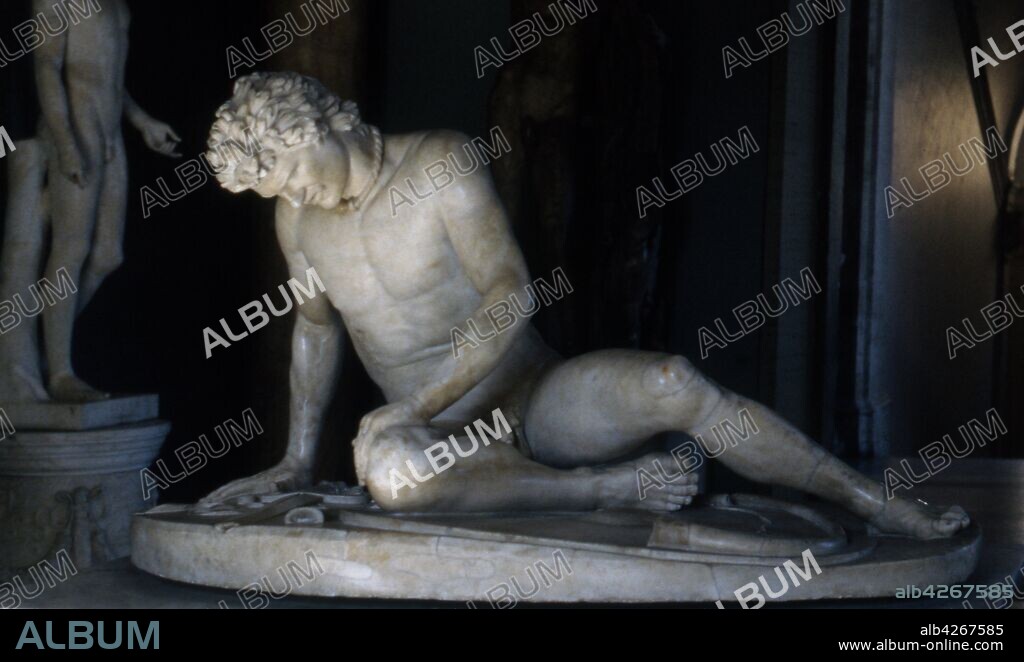alb4267585
The Dying Gaul, also called The Dying Galatian, or The Dying Gladiator, is an Ancient Roman marble copy of a lost Hellenistic sculpture, thought to have been originally executed in bronze. The original may have been commissioned some time between 230 and 220 BC by Attalus I of Pergamon to celebrate his victory over the Galatians, the Celtic or Gaulish people of parts of Anatolia (modern Turkey). The identity of the sculptor of the original is unknown, but it has been suggested that Epigonus, a court sculptor of the Attalid dynasty of Pergamon, may have been the creator.

|
Ajouter à une autre Lightbox |
|
Ajouter à une autre Lightbox |



Avez-vous déjà un compte? S'identifier
Vous n'avez pas de compte ? S'inscrire
Acheter cette image

Légende:
Voir la traduction automatique
The Dying Gaul, also called The Dying Galatian, or The Dying Gladiator, is an Ancient Roman marble copy of a lost Hellenistic sculpture, thought to have been originally executed in bronze. The original may have been commissioned some time between 230 and 220 BC by Attalus I of Pergamon to celebrate his victory over the Galatians, the Celtic or Gaulish people of parts of Anatolia (modern Turkey). The identity of the sculptor of the original is unknown, but it has been suggested that Epigonus, a court sculptor of the Attalid dynasty of Pergamon, may have been the creator.
Crédit:
Album / Universal Images Group / Universal History Archive/UIG
Autorisations:
Modèle: Non - Propriété: Non
Questions sur les droits?
Questions sur les droits?
Taille de l'image:
5100 x 3035 px | 44.3 MB
Taille d'impression:
43.2 x 25.7 cm | 17.0 x 10.1 in (300 dpi)
Mots clés:
ART CELTE • CELTIQUE • COPIE • GALATE • GAULISH • MARBRE • PIERRE MARBRE • SCULPTEUR • SCULPTURE • SCULPTURES • TECHNIQUE: SCULPTURE • TURQUIE
 Pinterest
Pinterest Twitter
Twitter Facebook
Facebook Copier le lien
Copier le lien Email
Email
